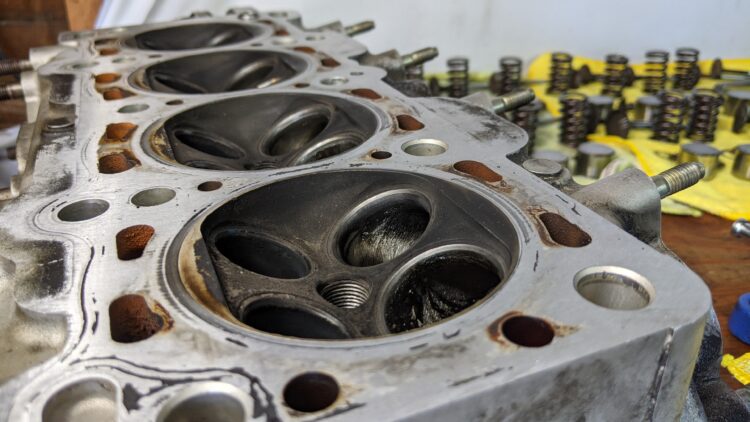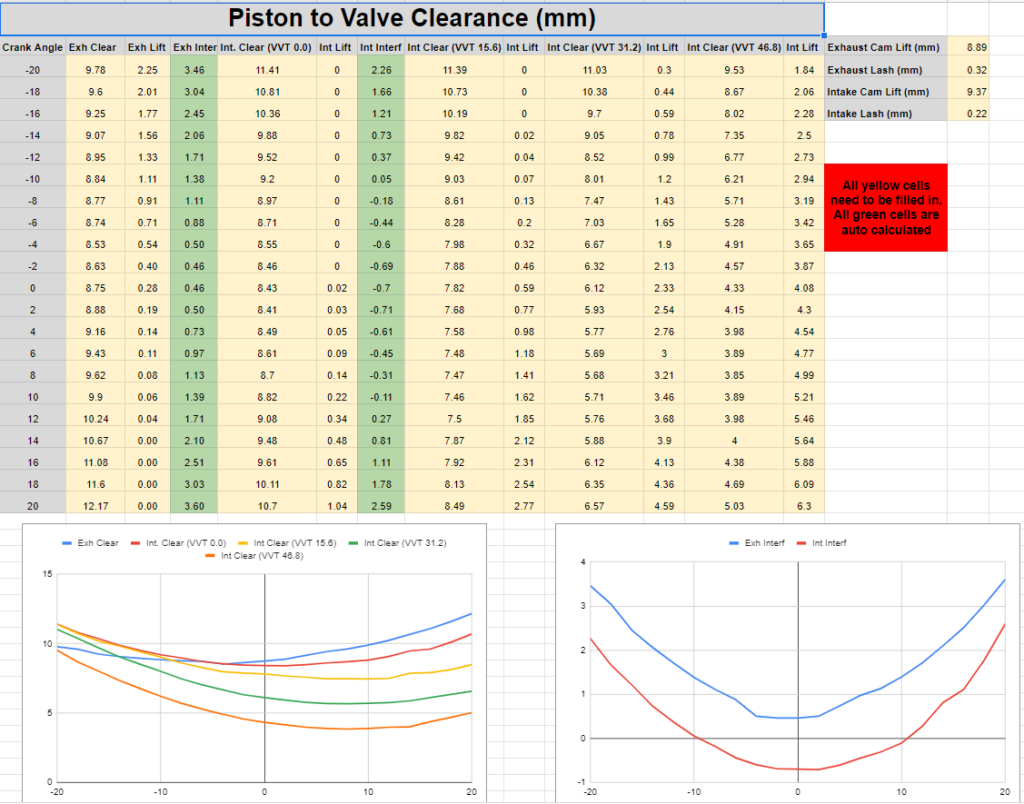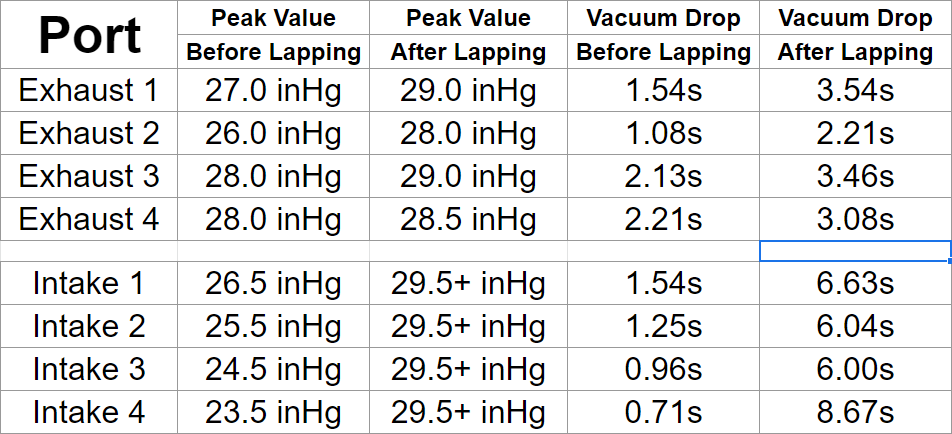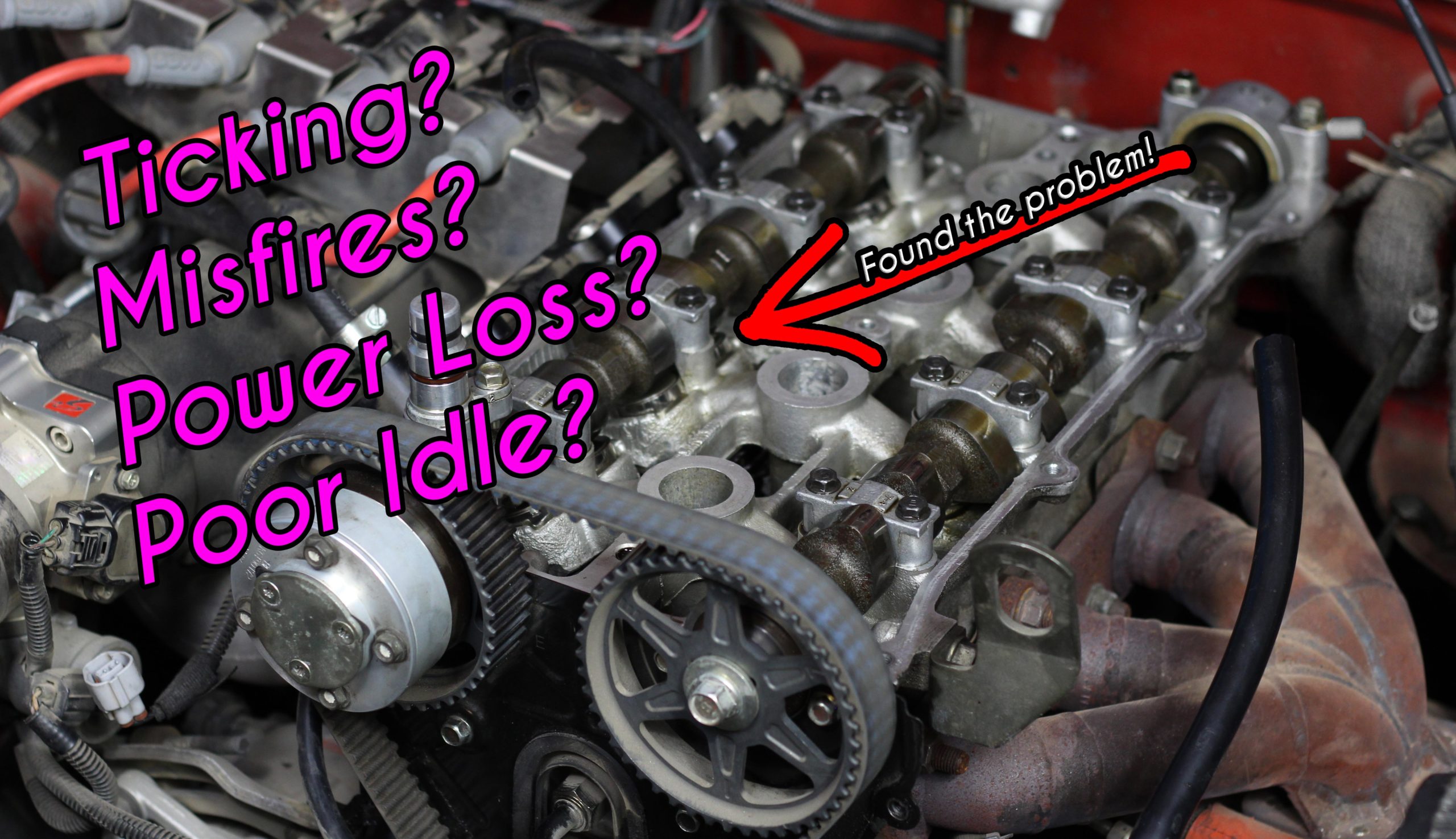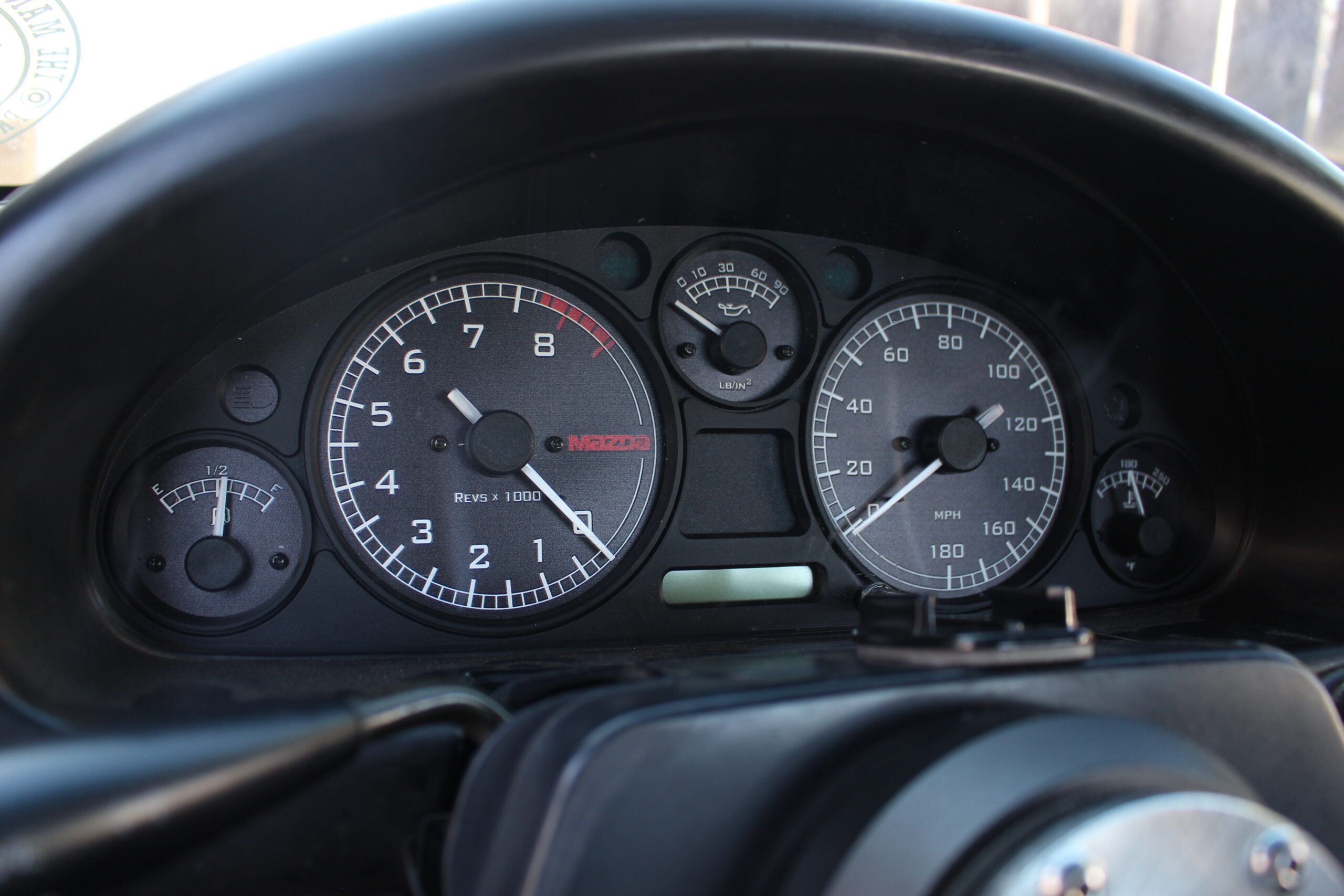Welcome to Car Passion’s collection of cylinder head data. This page will be continuously under construction until at least July, as I’m currently working through fixing/modifying/rebuilding 3 Miata cylinder heads.
- The VVT head in the 420whp “VVT Beast Miata” ate up its own intake valves at about 13,000 hard miles (21,000km). This is likely due to not running an aggressive enough valve spring, specifically one with not enough seat pressure. Related Videos:
- The soon-to-be-nitrous-but-not-as-soon-as-I-thought NB Miata, aka “Project: Too Soon Junior”, started losing power between dyno sessions, which led me to do some investigating. These investigations yielded random compression test results in cylinder #2, showing as low as 30psi but as high as 120psi. On the leakdown test it showed heavy leakage mostly through the intake valves, a bit through the exhaust valves, and nothing notable into the crankcase. The head needs to come off and hopefully a valve job will get it back to healthy power, my goal is to hit 155whp with just basic bolt-ons and a tune, a respectable number that would match the power output of an all-stock Mazdaspeed Turbo Miata. With nitrous I hope to see a safe 200whp, showing that NAWS isn’t just something that instantly blows up cars in movies and on rogue Youtube Channels.
- The NB Miata mad lad head build. “Why don’t you just build this head now and install it?” Because I set out with a certain goal to prove what can be achieved with basic bolt-ons, and I plan on following through with it. That being said, a couple months ago someone gifted me this mystery BP4W head. The thing’s got aggressive porting, a massive shave, and needs to live again. My plan with this thing is to bolt it onto the spare BP6D (01-05 VVT Engine) block and see what I can crank it up to on the stock bottom end. My side quest is to chase down the current stock bottom end record of 185whp held by my friend Quinn at The Slip Angle (Formerly GQM Garage). He built that car several years ago and is the perfect example and motivation for many of the things I’ve done on my channel – completely maxing out parts and seeing what they can REALLY do, not what the internet says they can do. His main constraint was that the bottom end of the engine remain stock, and the stock rods restrict the maximum safe RPM, which limits horsepower. I’ll be following that same guideline and testing out several things on the way up to see how close I can get to Quinn’s number, as well as discussing some of the different advantages/disadvantages the two engines have against each other.
- [Videos coming]
Tools Used (More Will Be Added As They Appear In Videos)
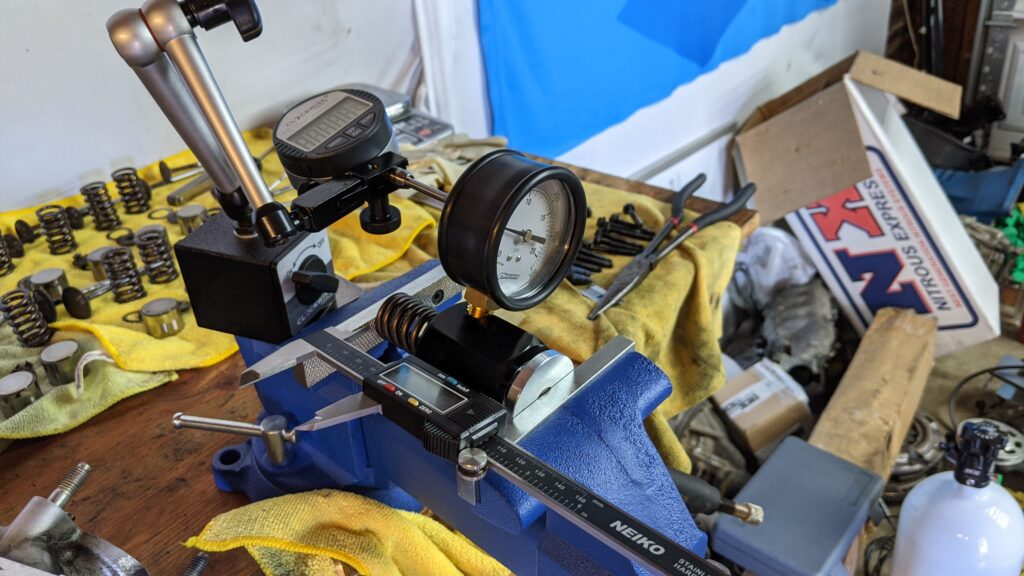
Measurements / Specs (More Coming As Builds Progress)
Current piston-to-valve clearance for the VVT Beast motor is shown below. This is with stock cams, a head with just a mild resurface (Less than 0.25mm/0.010″), and Supertech 9:1 84mm pistons. Click here to download the sheet to input your own numbers.
Here are the before/after lapping results from the VVT head. I’m not sure how good these are, but I most certainly made improvements. Exhaust valves are still original from the initial build and have been run (hard) for 13,000 miles. The intake valves are brand new. “Peak Value” is the maximum amount of vacuum the pump was able to pull on the port. “Vacuum Drop” is how long it took for the vacuum to drop from 20inHg to 5inHg after the pump was shut off.

